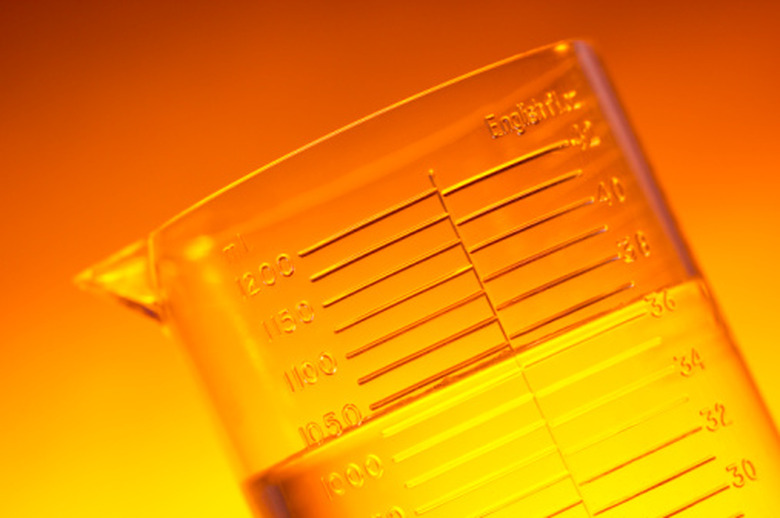How To Change The Molarity Of A Solution
A solution is composed of two parts: a solute and a solvent. Solute is the part that gets dissolved and solvent is the part that dissolves the solute in itself. A very good example of solute is table salt and of solvent is water. Molarity of solution is a scale to measure the concentration of the solution to keep track of the amount of the solute dissolved in the solution. Changing the molarity of a solution is not a difficult task but should be done carefully to achieve accurate results.
Step 1
Calculate the moles of the solute in the given solution by the formula; moles of solute = mass of solute (in grams)/molecular mass of the solute. For example, in a solution of water and 500 grams of sodium chloride (table salt) moles of sodium chloride can be calculated by dividing 500 by molecular mass of sodium chloride, i.e., if you have 58.4 moles sodium chloride then 500/58.4 = 8.5 moles.
Step 2
Determine the molarity of the solution by the following formula: molarity of solution = moles of solute/volume of solution (in liters).
Step 3
Change the molarity to the required degree with the help of the formula: M1xV1 = M2xV2, where M1 is the initial molarity of the solution, M2 is the required molarity, V1 is the initial volume of the solution and V2 is the final volume of the solution.
Step 4
Calculate the required volume of the solution to be changed to achieve the final molarity. For example, to change the molarity of one liter solution of water and sodium chloride with initial molarity of two to final molarity of one, the equation can be written as 2x1=1xV2. V2 can be calculated from the equation V2=2, i.e., the new solution should be two liters in volume. Adding one liter water to the initial solution will change the molarity to one. This method is used when molarity is to be reduced.
Step 5
Increase the molarity of the solution by adding the required amount of the solute. The required moles of the solute can be calculated with the help of the formula mentioned in Step 3. Convert the moles of the solute to mass of the solute required (in grams) to change the molarity with the help of the formula mentioned in Step 1.
Step 6
Add the required amount of the solute to the solution to increase the molarity of the solution. For example, to increase the molarity of one liter solution of water and sodium chloride from two to four, add the moles of solute required to increase the molarity by two. Calculate the amount of sodium chloride in two molar, one liter solution by the formula, moles of sodium chloride = volume of solution x molarity of solution, i.e., moles of sodium chloride = 1x2 or 2 moles. Calculate the mass of two moles of sodium chloride by the formula, moles of solute = mass of solute (in grams)/molecular mass of the solute. Mass of sodium chloride = 2X58.4 or 116.8 grams. Add 116.8 grams of sodium chloride to the solution to increase the molarity from two to four.
Step 7
Apply the above mentioned concept to decrease or increase the molarity of any other solution.
Things Needed
- Calculator
- Measuring flask
- Stirring rod
Cite This Article
MLA
Tripathi, Neha. "How To Change The Molarity Of A Solution" sciencing.com, https://www.sciencing.com/change-molarity-solution-8425643/. 24 April 2017.
APA
Tripathi, Neha. (2017, April 24). How To Change The Molarity Of A Solution. sciencing.com. Retrieved from https://www.sciencing.com/change-molarity-solution-8425643/
Chicago
Tripathi, Neha. How To Change The Molarity Of A Solution last modified March 24, 2022. https://www.sciencing.com/change-molarity-solution-8425643/
